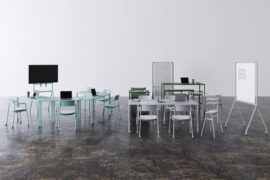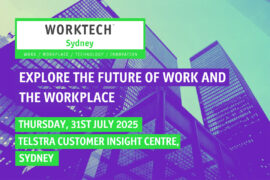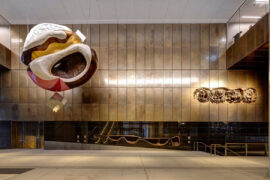At Zaishui Art Museum in Ritzhao, Shandong Province, the Japanese architect has recontextualised the connection between architecture, nature and water.

February 8th, 2024
For award-winning Japanese architect, Junya Ishigami, and his eponymous practice, this project for an art museum is very definitely rooted in China. The concept for what is a one-kilometre-long building is based on the tension between nature and humans (with architecture as our stand-in representative), particularly the architect’s perception of that tension in a Chinese context.
The main development at Zaishui Art Museum features an exhibition space, visitor centre and shopping centre. Ishigami’s stated ambition for the design is certainly grand: “A new relationship between nature and humans is born – making this happen is the object of the project.”

It begins with the observation that there is a disconnect between architecture and China’s “vast, boundless landscapes.” The country’s buildings, say the architects at junya ishigami + associates, seem to have “something lonely” about them… they “stand in isolation as if dropped into their limitless surroundings” and “everything feels in some way defensive.”
These reflections have led to a design that is trying with almighty scale to puncture the divide between nature and built form. It’s not, however, a shallow biophilic approach. This building doesn’t just mimic the landscape – it sits within it.
Related: Getting to know Hiroshi Nakamura

Set within an (artificial) lake, the building stretches a full kilometre with a floor area of 20,000 square metres; it undulates, narrows, widens, drops, twists and opens up. It’s an answer to a simple question: how to bring the natural environment and architecture as close as possible to one another?
Columns are repeated at intervals and filled in with glass, while a sash-like roof floats on top. The water’s edge suddenly takes on architectural connotations as the new ground surface and the usual inside-outside dichotomy is inverted.

Some of the glass sections can be opened up in mild weather, creating ventilation and adding airiness to the general atmosphere of light. At times wide, high and open, at others tight, low and enclosed, the spatial experience varies as the visitor passes through. Beneath the water, lower sections of the glass panels have gaps that naturally channel water from the lake indoors and the lake even freezes over in winter. It’s clear that the changeable, impermanent state of water is central to the design, not accommodated as an after-thought.
Zaishui Art Museum continues a number of themes in the work of Ishigami, who previously worked under Kazuyo Sejima at SANAA. Playing with scale, nature and the boundaries between inside and outside – these are all hallmarks to be read alongside his Naïve Art-like philosophy that prizes the perspective of children and asks, what might architecture be if we can unlearn some of our most ingrained assumptions?
Part ethereal and with a trademark atmosphere of lightness, this recent project seems to be at once transgressive and sensitive to nature; it draws delicate attention to and celebrates the qualities of water while enabling the hubristic act of walking on it.
junya ishigami + associates
jnyi.jp
Photography
Arch-Exist, junya ishigami + associates













Further reading – artificial intelligence, Metabolism and crisis in mid-20th-century Tokyo.
INDESIGN is on instagram
Follow @indesignlive
A searchable and comprehensive guide for specifying leading products and their suppliers
Keep up to date with the latest and greatest from our industry BFF's!

Welcomed to the Australian design scene in 2024, Kokuyo is set to redefine collaboration, bringing its unique blend of colour and function to individuals and corporations, designed to be used Any Way!
The new range features slabs with warm, earthy palettes that lend a sense of organic luxury to every space.

How can design empower the individual in a workplace transforming from a place to an activity? Here, Design Director Joel Sampson reveals how prioritising human needs – including agency, privacy, pause and connection – and leveraging responsive spatial solutions like the Herman Miller Bay Work Pod is key to crafting engaging and radically inclusive hybrid environments.

Gaggenau’s understated appliance fuses a carefully calibrated aesthetic of deliberate subtraction with an intuitive dynamism of culinary fluidity, unveiling a delightfully unrestricted spectrum of high-performing creativity.

At Saltbox in Sydney, this year’s INDE winners – including a Best of the Best from Asia – were announced at an extravagant, fun Gala awards night.

Architectus Principals Simone Oliver and Patricia Bondin are set to speak at WORKTECH Sydney this year, so we asked them for some sneaky early insights on workplace design.
The internet never sleeps! Here's the stuff you might have missed

Sydney Open Symposium launches 23 August, bringing together architects, planners and cultural leaders to explore the design and impact of the Sydney Metro Martin Place precinct.

THISS Studio has completed the interior fit out of a flexible office and creative space in east London for independent communications studio, SALT.

For three-quarters of a century, the iconic Eames Shell Chair has redefined the very act of sitting with its groundbreaking form, proving that, rather than restrict, the right mould can embrace every space, need and individual aspiration.

On the evening of Thursday 31st July the winners of the 2025 INDE.Awards were announced at a spectacular VIP gala at Saltbox in Sydney, Australia. The night was a celebration of the outstanding people and exemplary projects and products from across our region and showcased the incredible talent that resides within the Indo-Pacific.